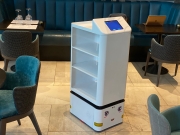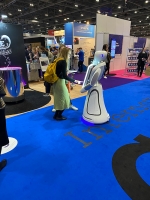The Rise Of Service Robots
The rise of service robots has slowly been seeping into the market over the last few years with the recent pandemic having increased the awareness of their usefulness, especially in the entertainment and hospitality sectors.
There has been particular uptake of service Robots in restaurants where they are being used to deliver food and drinks, return plates and glasses to the bar and of course enhance the customer experience. All of this is very useful as restaurant owners tackle the problem of social distancing when premises open once more to the public.
Amongst the popular service Robots are the ones that have excellent navigational skills, meaning they are able to navigate a set path in a restaurant, take food orders, advertise menu’s and interact with guests. All of this has been made possible of course through the advancement and improvements in A1 Technology, allowing virtual bots to turn customer service into self- service.
The theory that service Robots are replacing humans has been a long-standing debate but recent developments are showing that rather than replace humans, these bots are working alongside humans to enhance customer experience, improve service and avoid errors.
Other bots popular and being used within the hospitality industry include delivery Robots that carry out the very specific task of delivering customer orders. The very precise way these bots can and do deliver food and drinks means other staff can be directed to front of house and more customer facing environments providing an overall excellent service.
Predictions for the next five years vary in degrees of opinion surrounding the use and popularity of Robots in such settings as Restaurants and public places but all have one thing in common, they predict the use of Robots, most notably service robots will increase dramatically over the next five years.
Annual installations of industrial Robots has more than tripled within ten years from 2010-2019 reaching an estimated 381 thousand units in factories around the world. This mission to combine traditional production with go-digital strategies is said to be the main incentive.
The service robotics market was valued at 23511.1 Million USD in 2020, with an expected reach of 212619 million by 2026. Technology innovations have certainly made service Robots more appealing to the market, researchers at university of California have developed a Robot that uses artificial intelligence A1 to perform intricate human tasks such as folding laundry or making Coffee.
Going forward in a tough economic climate, restaurant owners and businesses within the hospitality sector will need to think outside of the box to ensure they are able to offer and provide the absolute best service they can at a price point and offering that still attracts both new and returning customers and this is where the rise of service robots is likely to come into its own.




